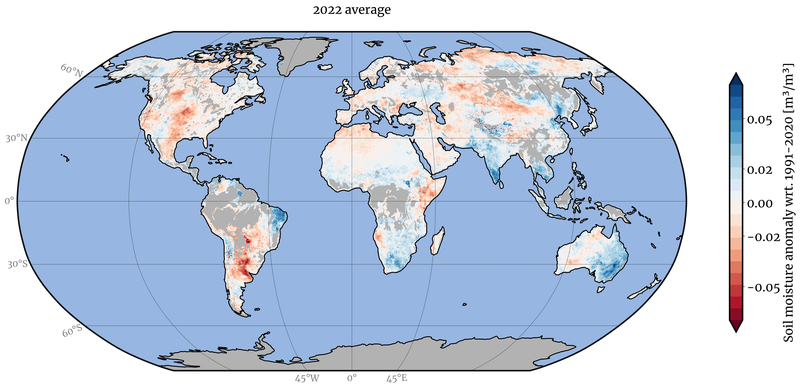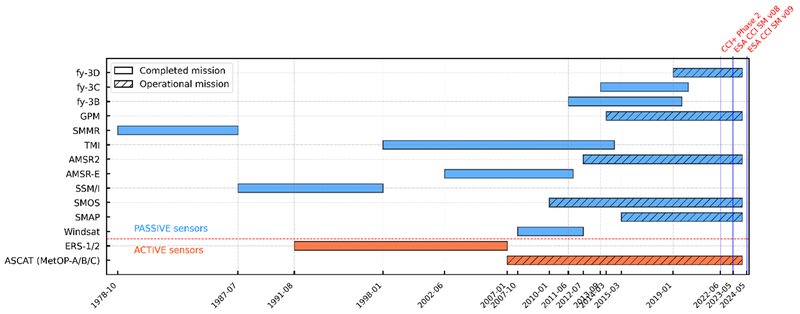About
The important role of soil moisture for the environment and climate system is well known. Soil moisture influences hydrological and agricultural processes, runoff generation, drought development and many other processes. It also impacts on the climate system through atmospheric feedback. Soil moisture is a source of water for evapotranspiration over the continents, and is involved in both the water and the energy cycles. Soil moisture was recognized as an Essential Climate Variable (ECV) in 2010.
The Soil Moisture_cci project is part of the ESA Programme on Global Monitoring of Essential Climate Variables (ECV), better known as the Climate Change Initiative (CCI), initiated in 2010 and producing an updated soil moisture product every year. The ESA CCI Soil Moisture product has contributed to hundreds of hydrological and climatological studies worldwide, as well as the annual BAMS "State of the Climate" reports.
The CCI Soil Moisture project produces:
- Annually algorithmically updated global climate data record of soil moisture spanning over 40 years.
- 3 separate soil moisture products derived from active, passive and combined (active + passive).
- 15 public releases to date, each updated with new sensors and extended time series.
The dataset ingests soil moisture datasets derived from the sensors listed in the figures below. In particular, the following datasets are used (at ESA CCI SM v09.1):
- ASCAT-A, -B and -C data are generated through the HSAF soil moisture project which can be accessed on the EUMETSAT HSAF soil moisture website. At v09.1, version H119/120 of the data record is ingested.
- ERS data is processed by the Microwave Remote Sensing Group at TU Wien.
- All passive datasets are processed using the LPRMv7 algorithm, designed and implemented by Planet.
ESA CCI Soil Moisture User feedback survey
Please consider filling in our anonymous survey at this link, requiring only 8-12 minutes to complete.
Your response is invaluable to the ESA CCI Soil Moisture project and we thank you for any time you can dedicate to it.




